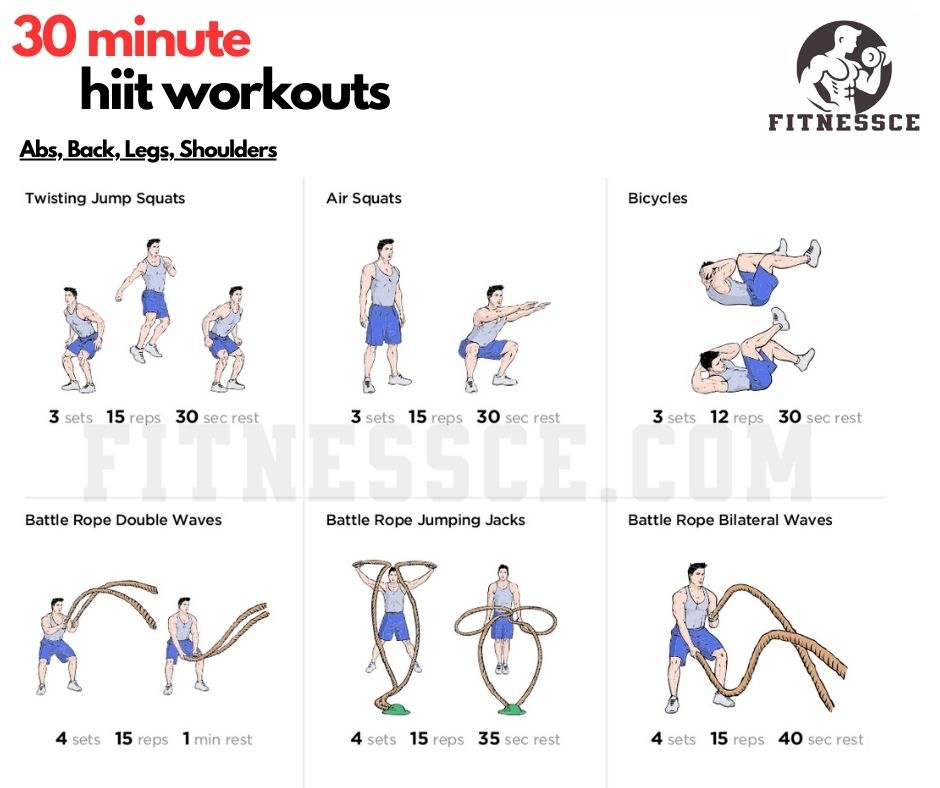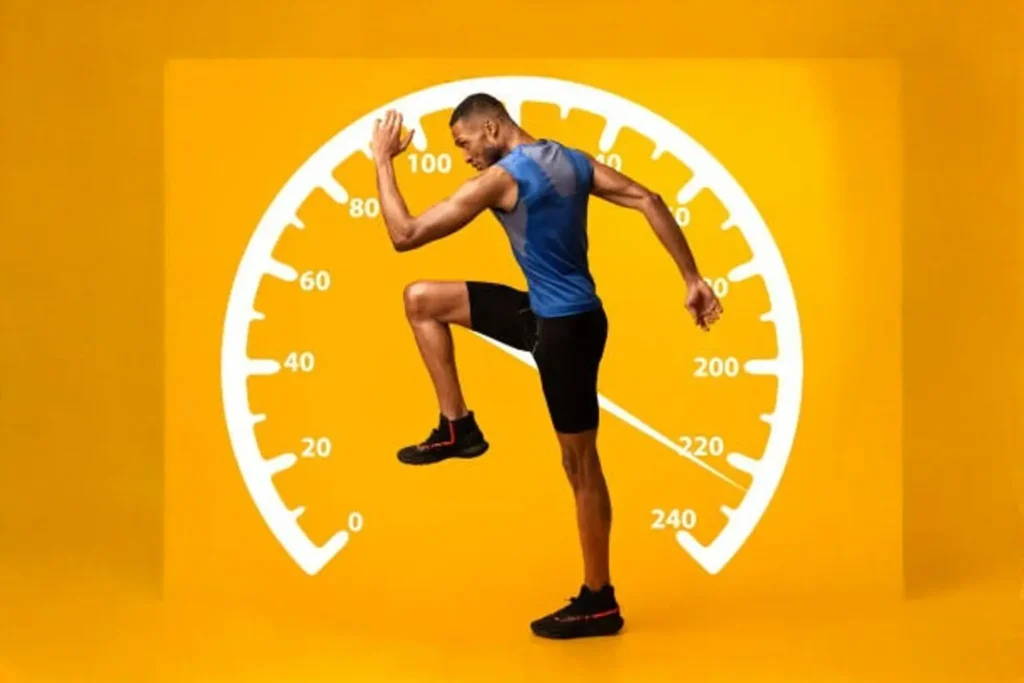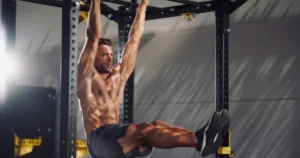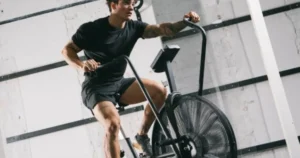Between-set exercises that are very hard can help you lose up to 450 calories in 30 minutes. That’s 30% more than steady-state activity in the same amount of time. Parents, people who work, and other busy people may find it hard to find time to work out. That’s where 30 min HIIT workouts come in because they can fit into even the busy days and still get the job done.
When you do High-Intensity Interval Training or HIIT, you alternate between short bursts of hard exercise and short breaks. This method not only saves time but also burns more calories, strengthens the heart, and makes lean muscle. You can use this guide whether you’re new to fitness and want to find HIIT workouts for beginners or you want to push yourself with a 30-minute full-body HIIT workout.
This article will talk about the science behind HIIT, give you five different 30 min HIIT workouts plans for different fitness levels, and give you tips from experts on how to get the most out of your workouts and avoid getting hurt.What
is HIIT, and why do it for 30 minutes?
What the Burn Is Really About
There is a lot of scientific proof that HIIT works, so it’s not just a new workout craze. During times of high intensity, your heart beats at 80 to 95% of its maximum rate. As a result, your body has to pay back an “oxygen debt” while it heals. Too Much Oxygen Consumption (EPOC), also called the “afterburn effect,” is when your body keeps burning calories quickly for up to 24 hours after you work out.
When you do steady-state cardio, you keep the energy at a moderate level. HIIT, on the other hand, forces your cardiovascular system to adapt to sudden changes in intensity.

This raises:
· VO2 max (maximum oxygen uptake)
· Insulin sensitivity
· Mitochondrial density (the energy producers in your cells)
· Fat combustion (the process by which your body turns fat into fuel)
Many studies show that HIIT is just as good for your heart as or better than moderate-intensity constant training, and it takes a lot less time.
Why 30 Minutes Is Just Right
The best balance between intensity and time for HIIT is thirty minutes.
This is why:
• Sustained intensity: Most people can keep up good form and a high level of energy for this long period of time without getting too tired.
• Hormonal balance: Workouts that last longer than 45 minutes can raise levels of the stress hormone cortisol, which could cause muscles to break down.
• Saves time: A study from the Journal of Sports Science & Medicine found that aerobic capacity improves just as much during 30-minute HIIT workouts as it does during an hour-long moderate cardio session.
• Managing recovery: HIIT is very intense, so you need to make sure you get enough rest. Limiting lessons to 30 minutes lowers the risk of overtraining.
A 2019 study in the British Journal of Sports Medicine found that HIIT workouts as short as 20 to 30 minutes made a big difference in cardiometabolic health. This means that 30-minute HIIT workouts are perfect for people who want to get the most out of their time.
Things you should think about before you start
Before you start a 30 min HIIT workouts for your whole body, make sure you do these things:
Clearance from doctors
Before you start HIIT, talk to your doctor, especially if you have:
· Heart problems
· Joint issues Have diabetes or high blood pressure
· Are pregnant or have recently given birth
• Warm up and cool down
Don’t forget these important parts: Warm up for five minutes by doing dynamic exercises like arm circles, leg swings, and light running in place to slowly raise your heart rate.
Cool-down (5 minutes): Slowly lower the intensity and do some static stretching to help your muscles heal and feel less sore.
Correct Form
Form breaks down when you’re tired, which makes you more likely to get hurt. Think about working with a certified trainer at first, using mirrors to check form, lowering the intensity without sacrificing technique, and putting more emphasis on quality over number.
Pay attention to your body.
HIIT is meant to be hard, but pain is never the point:
Know the difference between pain (stop right away) and discomfort (ask for help)
- Change your exercises as needed
- Get extra rest when you need it
- Gradually get better
5 Good HIIT Workout Plans for 30 Minutes
Try Workout 1: HIIT for Beginners (No Equipment Needed)
This workout is great for people who are new to HIIT because it doesn’t require any tools and can be done anywhere.
Building:
Work for 20 seconds, rest for 40 seconds and repeat for 4 rounds, with 5 routines in each round.
It will take 30 minutes, which includes the warm-up and cool-down.
The Workout:
| Exercise | Description | Muscles Worked |
| March in Place | Stand tall, lift knees to hip height, alternating legs | Core, hip flexors |
| Modified Push-ups | Hands wider than shoulders, knees on the floor | Chest, shoulders, triceps |
| Squats | Feet shoulder-width apart, lower as if sitting in a chair | Quads, glutes, hamstrings |
| Standing Side Bends | Stand tall, reach arm overhead, bend sideways | Obliques |
| Alternating Reverse Lunges | Step backward into a lunge position, alternate legs | Quads, glutes, hamstrings |
Modifications:
· Reduce range of motion if needed
· Take longer rest periods
· Emphasize form above speed.
Estimated calories burnt vary depending on weight and effort: 150–250
Second work: intermediate HIIT (bodyweight).
For those comfortable with fundamental exercises, this 30-minute full-body HIIT workout tests them.
Structural:
Work: 30 seconds
Rest: 30 seconds
• Rounds: 3 circuits (each circuit contains 6 exercises)
• Thirty minutes total—including a warm-up and a cool-down.
The Practice:
| Exercise | Description | Muscles Worked |
| High Knees | Run in place, bringing knees to hip height | Core, hip flexors, quads |
| Push-ups | Full or modified, maintain a straight body line | Chest, shoulders, triceps |
| Jump Squats | Regular squat with explosive jump at the top | Quads, glutes, calves |
| Mountain Climbers | Plank position, alternate bringing knees to chest | Core, shoulders, hip flexors |
| Bicycle Crunches | Lie on your back, alternate elbow to opposite knee | Core, obliques |
| Plank Jacks | Start in plank, jump feet out and in | Core, shoulders, legs |
Progression options:
- Increase work time to 40 seconds, decrease rest to 20 seconds
- Add plyometric variations (e.g., push-ups with clap)
- Increase speed while maintaining form
Estimated calories burned: 250-350 (varies by weight and effort)

Workout 3: Advanced HIIT (with Dumbbells)
This challenging routine incorporates resistance training for strength and cardiovascular benefits.
Structure:
- Work: 40 seconds
- Rest: 20 seconds
- Rounds: 3 circuits (each circuit contains 6 exercises)
- Total time: 30 minutes (including warm-up and cool-down)
Equipment needed: Pair of medium-weight dumbbells (women: 5-15 lbs, men: 10-25 lbs)
The Workout:
| Exercise | Description | Muscles Worked |
| Dumbbell Thrusters | Squat holding dumbbells at your shoulders, press overhead as you stand | Full body |
| Renegade Rows | Push-up position with hands on dumbbells, alternate rowing each arm | Back, core, chest |
| Dumbbell Swings | Similar to kettlebell swings, using one or two dumbbells | Posterior chain, shoulders |
| Plank to Dumbbell Row | Plank position, alternate single-arm rows | Core, back |
| Dumbbell Burpees | Full burpee-holding dumbbells | Full body |
| Dumbbell Russian Twists | Seated, feet off the ground, rotate torso side to side with a dumbbell | Core, obliques |
Suggestions for weight choice:
• Choose weights that challenge you by the end of each interval
• Form should never be compromised for heavier weights
• Various workouts may call for varying weights.
Calculated calorie burn: 300–450 (variations in weight and effort)
The fourth workout is HIIT for Cardio Endurance.
This program emphasizes raising and maintaining your heart rate to increase cardiovascular endurance.
Architecture:
• Work: 45 seconds
• Rest: 15 seconds
• Rounds: 2 circuits (each circuit contains a 10-minute EMOM)
• Total time: 30 minutes (including warm-up and cool-down)
EMOM = Every Minute on the Minute Finish the recommended exercise in the first forty-five seconds, then relax for the remaining fifteen before beginning the following one.
Circuit First:
1. Jacks for jumping
2. Great Knees
3. Squat Jumps
4. Mounted Climbers
5. Skaters for Speed
Second circuit:
One type of burpee
2. Pank Jacks
3. Lunges in jumping order
4. Quick Shuffle of Fast Feet
5. Stellar Jumps
Successful advice:
• Emphasize controlled breathing; instead of running and collapsing, keep a steady tempo; do more quality repetitions than numbers.
Estimated calories burnt vary depending on weight and effort: 300–400
Workout five: Low-impact HIIT (Joint-friendly)
This workout shows that you can do an effective HIIT workout without doing a lot of high-impact moves.
Framework:
• Work: 40 seconds
• Rest: 20 seconds
• Rounds: 3 circuits (each circuit contains 6 exercises)
• Total time: 30 minutes (including warm-up and cool-down)
The Workout:
| Exercise | Description | Muscles Worked |
| Step Jacks | Jumping jack motion without the jump | Shoulders, legs |
| Wall Push-ups | Push-ups performed against the wall at an angle | Chest, shoulders, triceps |
| Squat to Calf Raise | Squat down, rise to your toes when standing | Legs, calves |
| Standing Mountain Climbers | Marching with emphasis on core engagement | Core, hip flexors |
| Seated Russian Twists | Russian twists without feet elevated | Core, obliques |
| Glute Bridges | Lie on your back, lift your hips toward the ceiling | Glutes, hamstrings |
Why it’s effective:
- Maintains elevated heart rate without joint stress
- Focuses on controlled movement patterns
- Allows for higher training frequency due to reduced recovery needs
Estimated calories burned: 200-300 (varies by weight and effort)
HIIT Timer
Use this simple interval structure for your workouts:
Pro Tip: Download a free HIIT timer app like “Interval Timer” or “Tabata Timer” to keep track of your work and rest periods without constantly checking the clock.
Tips for Success and Avoiding Injury
Hydration
- Drink 16-20 oz of water 2-3 hours before your workout
- Sip water during rest periods
- Consume 16-24 oz of water post-workout for every pound lost through sweat
Nutrition
- Pre-workout: Light carbohydrate and protein meal 1-2 hours before (e.g., banana with peanut butter)
- Post-workout: Protein and carbohydrates within 30-60 minutes (e.g., protein shake with fruit)
- Overall: Balanced diet supporting workout intensity and recovery
Progressive Overload
- Week 1-2: Focus on form and completing intervals
- Week 3-4: Increase work time or decrease rest time
- Week 5-6: Add complexity to exercises
- Week 7-8: Increase intensity through speed or resistance
Rest and Recovery
- Limit HIIT to 2-3 non-consecutive days per week
- Incorporate active recovery (walking, light cycling, yoga)
- Prioritize 7-9 hours of quality sleep
- Consider foam rolling and stretching between workout days
Conclusion
The great thing about 30-minute HIIT workouts is how quickly and well they work. Whether you’re a beginner looking for HIIT workouts for beginners or an experienced athlete pushing your limits with a 30-minute full-body HIIT workout, these routines show that you don’t have to let lack of time stop you from getting fit.
You can change your fitness level in just thirty minutes, three times a week, if you understand the science behind HIIT, properly prepare, and follow organized programs like the ones above. Do not forget to pay attention to your body, make small steps, and enjoy the process. The benefits will come after.
Are you ready to see what HIIT is all about? Do the easy workout today and work your way up from there. The thirty minutes you spend now will help you in the future.
Which HIIT workout is your favorite? Write your answer in the space below!


















